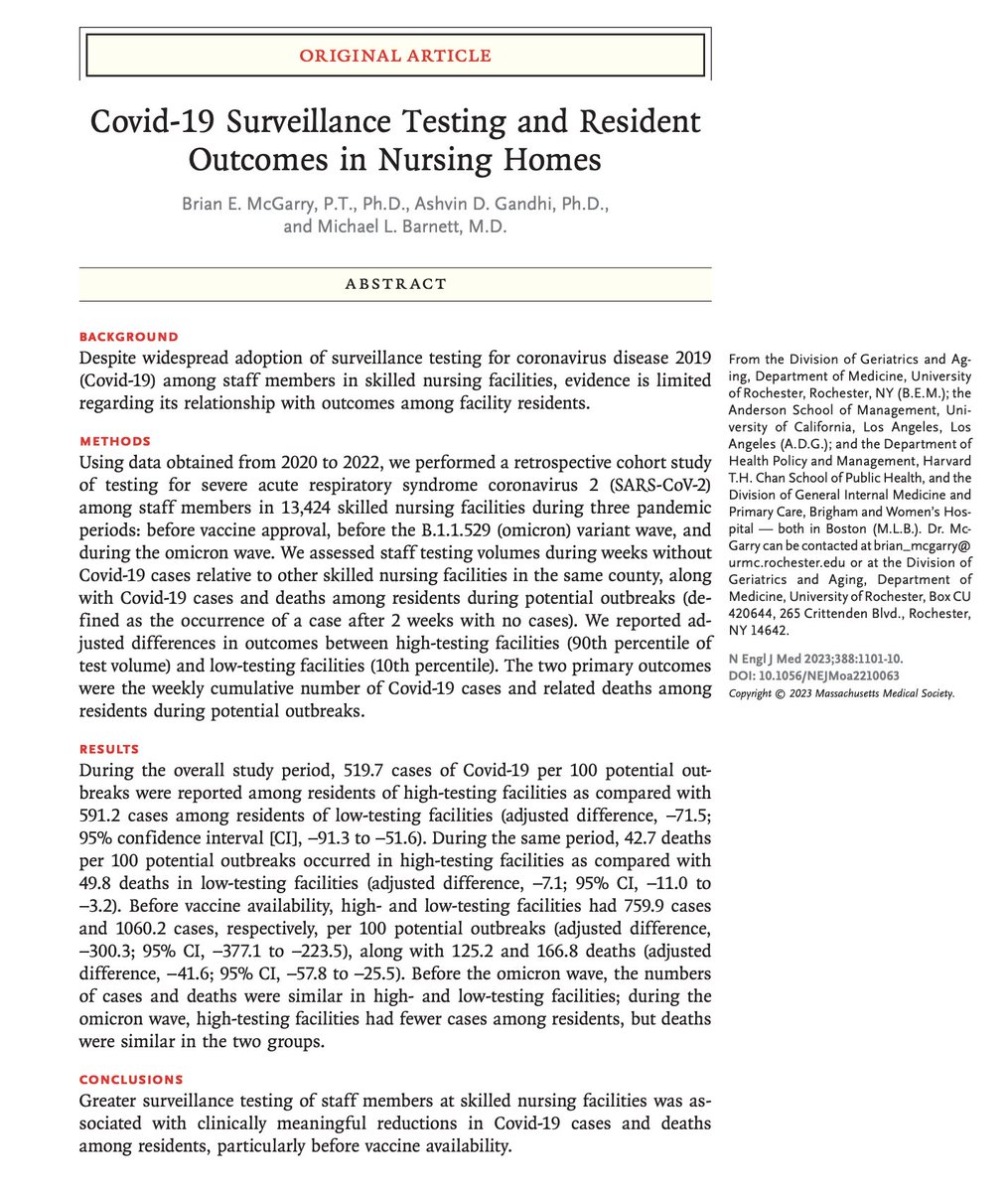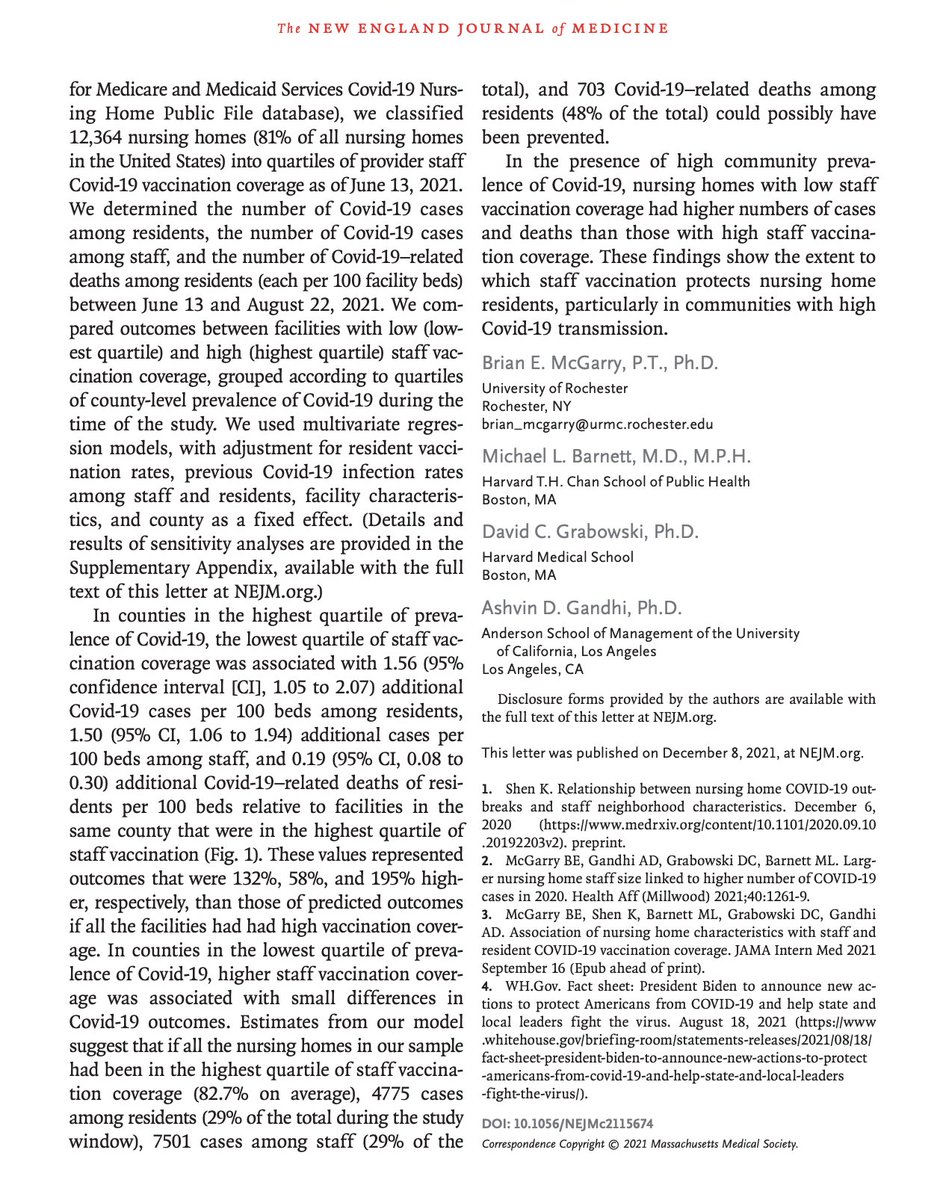Two important studies today in @JAMAInternalMed on digital access among older Americans.
They are framed as relevant to telemedicine access but really this is about accessing almost ANY service in the Covid-19 era
Brief thread
jamanetwork.com/journals/jamai…
jamanetwork.com/journals/jamai…
They are framed as relevant to telemedicine access but really this is about accessing almost ANY service in the Covid-19 era
Brief thread
jamanetwork.com/journals/jamai…
jamanetwork.com/journals/jamai…
@JAMAInternalMed The first study by @eric_t_roberts @Ateevm uses Census data from 2018 to ask how many Medicare enrollees have access to:
1) any computer with high speed internet
2) smartphone with data
3) any digital access
And over 1 in 4 lack ANY digital access as above

1) any computer with high speed internet
2) smartphone with data
3) any digital access
And over 1 in 4 lack ANY digital access as above


@JAMAInternalMed @eric_t_roberts @Ateevm Other stats:
Proportion that lack digital access:
- 50% of those 85+
- 45% of those with less than HS education
- 50% of those below the federal poverty limit
- 36% of those on Medicaid
Clearly video telemedicine won't be accessible to wide swaths of vulnerable older adults
Proportion that lack digital access:
- 50% of those 85+
- 45% of those with less than HS education
- 50% of those below the federal poverty limit
- 36% of those on Medicaid
Clearly video telemedicine won't be accessible to wide swaths of vulnerable older adults

@JAMAInternalMed @eric_t_roberts @Ateevm Next paper by @drklam @geri_doc and colleagues uses another federal survey of older adults
They look at older adults' experience with technology + physical limitations and ask - who could use video or telephone telemedicine with these constraints?
jamanetwork.com/journals/jamai…

They look at older adults' experience with technology + physical limitations and ask - who could use video or telephone telemedicine with these constraints?
jamanetwork.com/journals/jamai…


@JAMAInternalMed @eric_t_roberts @Ateevm @drklam @geri_doc Nearly 1 in 4 older adults (24%) has not emailed, texted or gone online in a month. If you assume that anyone with kids at home can get help, it's still 20%.
Sadly, 20% of older adults can't really use the telephone either because of hearing or dementia issues.
Sadly, 20% of older adults can't really use the telephone either because of hearing or dementia issues.

@JAMAInternalMed @eric_t_roberts @Ateevm @drklam @geri_doc Takeaways from these simple but valuable descriptive studies:
I like telemedicine as much as the next person, but there are millions of older adults completely unable to access or engage with it
This isn't just about telemedicine - COVID-19 is restricting all in-person activity
I like telemedicine as much as the next person, but there are millions of older adults completely unable to access or engage with it
This isn't just about telemedicine - COVID-19 is restricting all in-person activity
@JAMAInternalMed @eric_t_roberts @Ateevm @drklam @geri_doc So, things like keeping in touch with family, ordering new groceries, getting house repairs, regular stuff is hard when the internet or phone is all you have
This is millions and millions of older adults in the US, disproportionately minorities, low income, those with disability
This is millions and millions of older adults in the US, disproportionately minorities, low income, those with disability
@JAMAInternalMed @eric_t_roberts @Ateevm @drklam @geri_doc There is a lot of talk about the "digital divide" but this is also something of an "isolation divide."
Older adults are at very high risk from COVID-19, and justifiably many are frightened to risk much outside contact. But they are unable to get basic services without doing so.
Older adults are at very high risk from COVID-19, and justifiably many are frightened to risk much outside contact. But they are unable to get basic services without doing so.
@JAMAInternalMed @eric_t_roberts @Ateevm @drklam @geri_doc So, this is a big policy issue. I don't think that it will be fixed by simply throwing a bunch of money at it. This is a community engagement challenge, and also one for health care systems to tackle - how to identify and support older adults with greatest need.
• • •
Missing some Tweet in this thread? You can try to
force a refresh



















